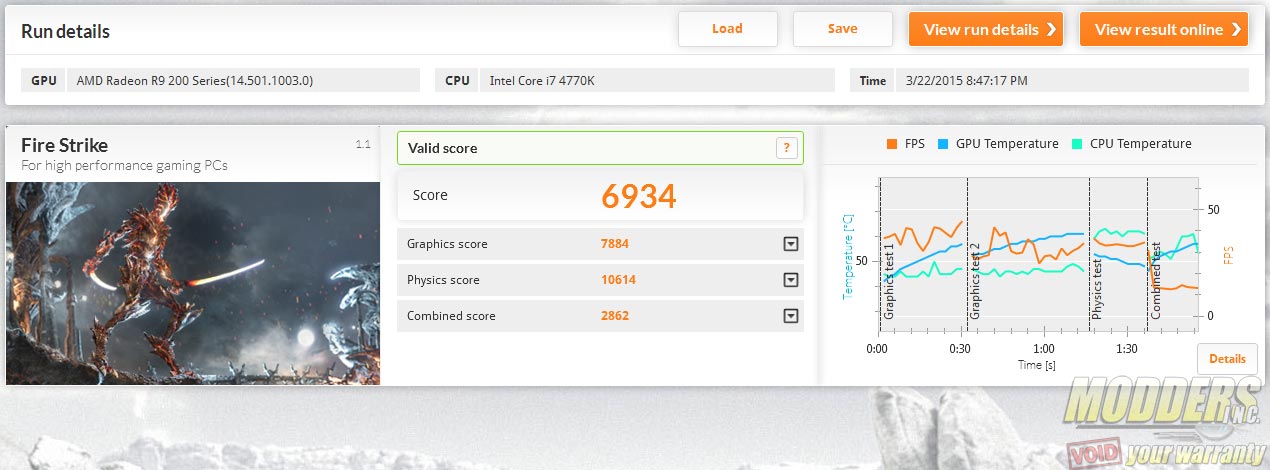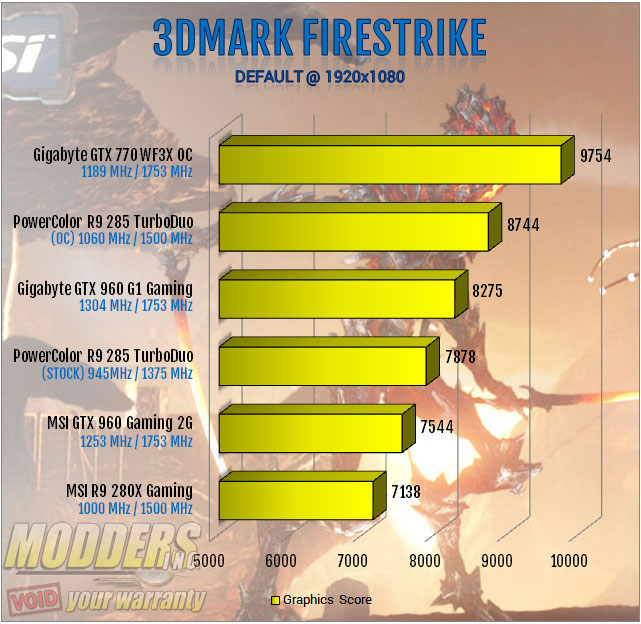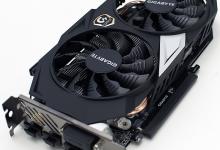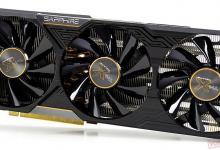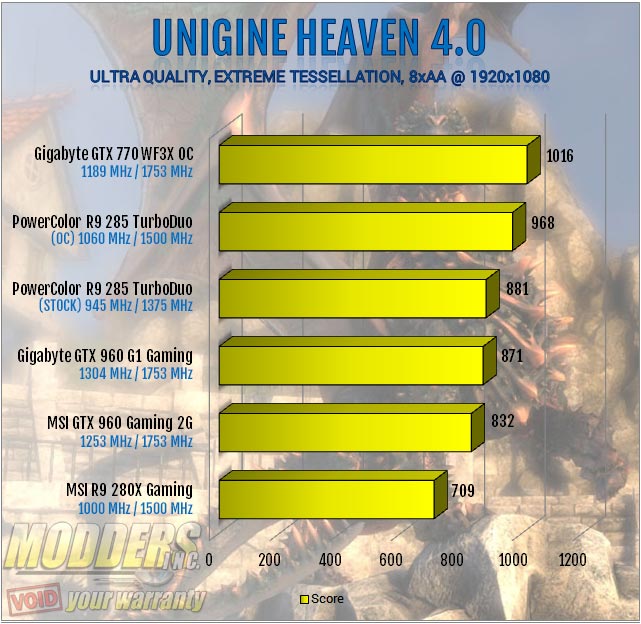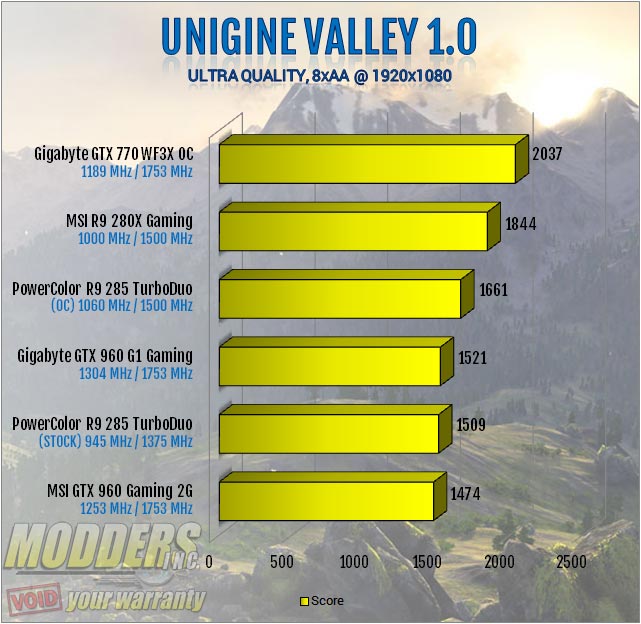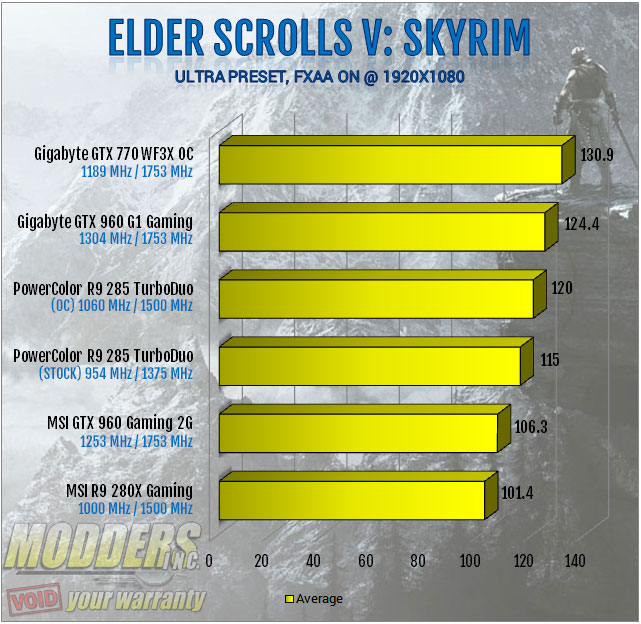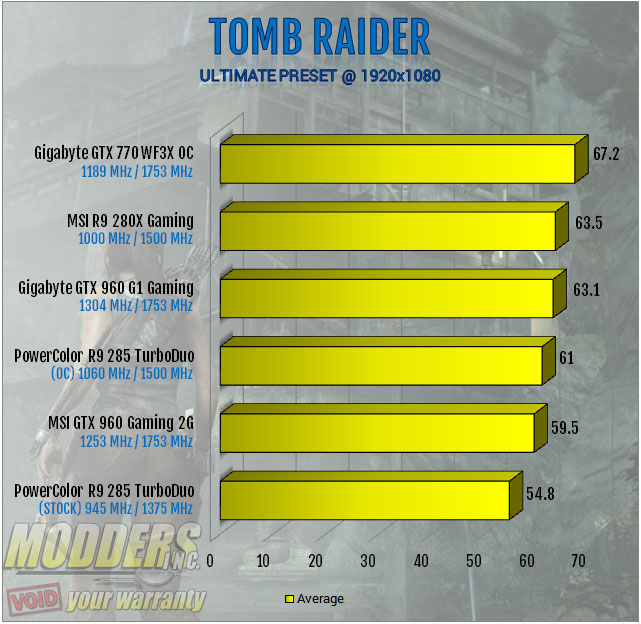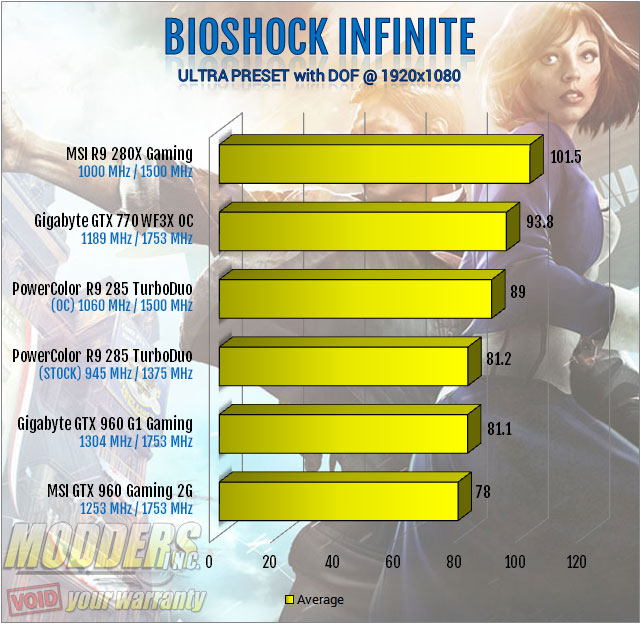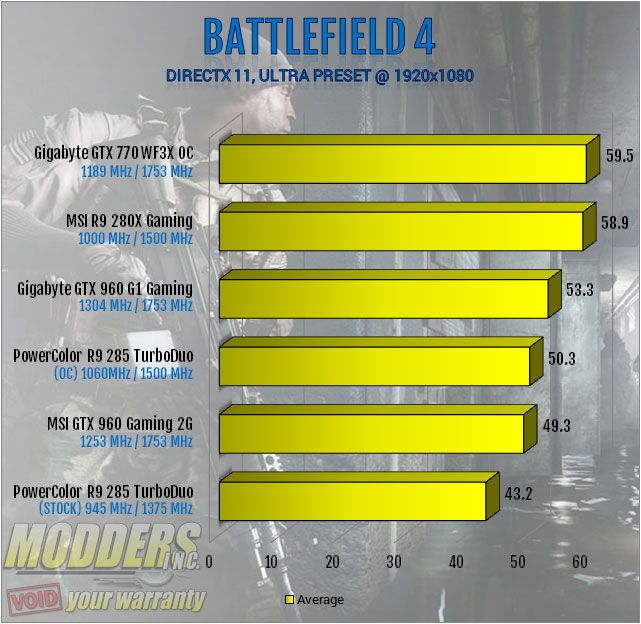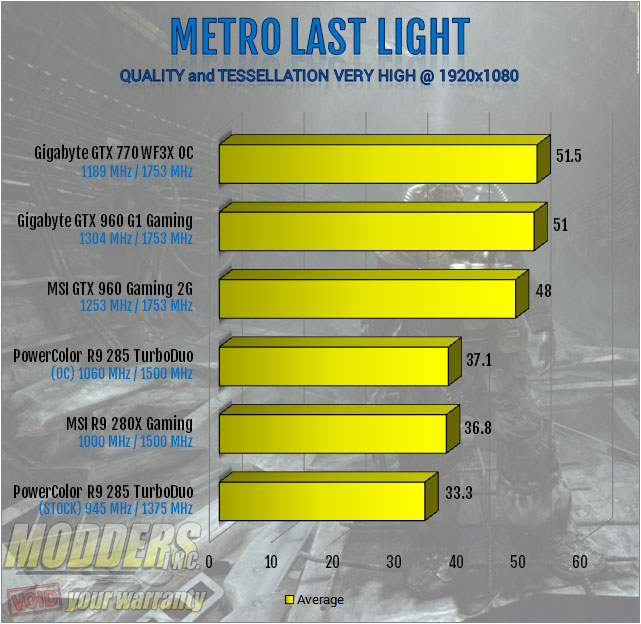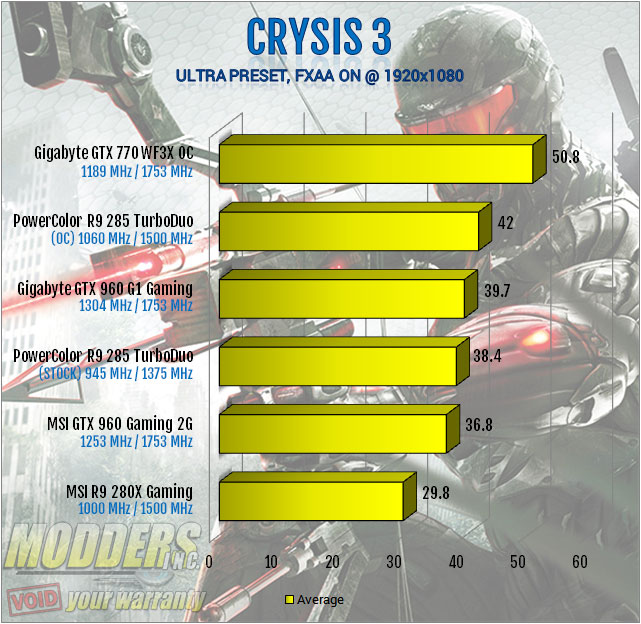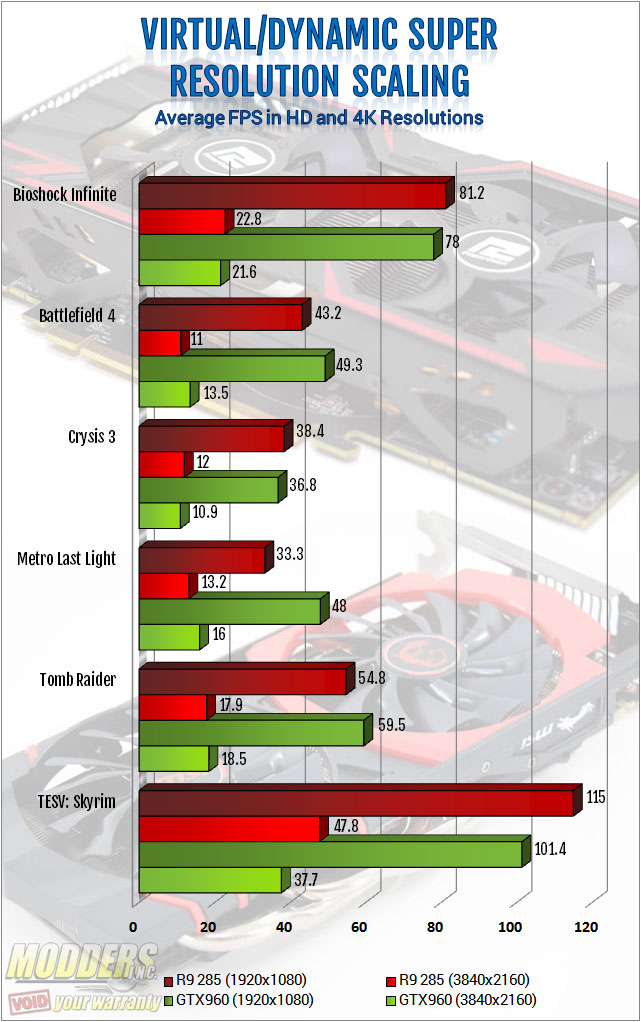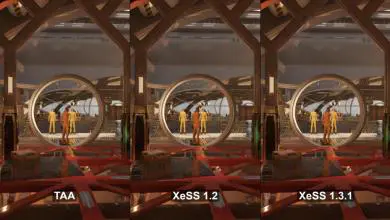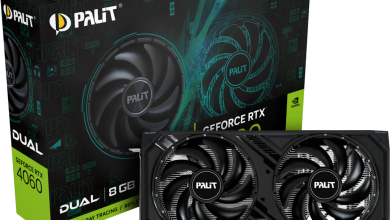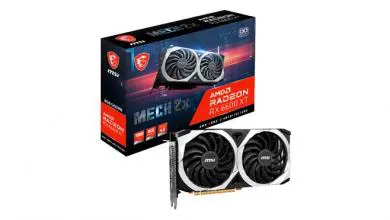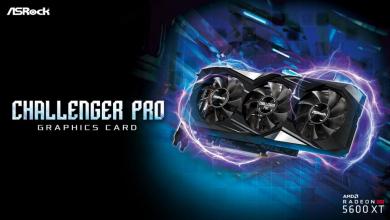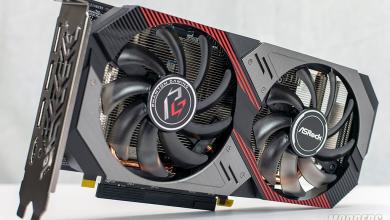PowerColor R9 285 2GB Turbo Duo Review: It Takes Two to Tonga
Test System and Testing Procedures
| Processor | Intel Core i7-4770K (Retail) |
| CPU Cooler | Noctua NH-U14S with Noctua NT-H1 thermal compound |
| Motherboard | ASUS Z87 Maximus VI Gene |
| Memory | Patriot Viper 3 “Black Mamba” 2x8GB DDR3 2100 MHz CL11 |
| Storage | OCZ Agility 4 256GB SSD |
| Case | DimasTech Mini v1 test bench |
| Drivers | AMD Catalyst 14.12, NVIDIA 347.25 |
| Video Card(s) | PowerColor Radeon R9 285 TurboDuo, MSI GTX 960 Gaming 2G, Gigabyte GTX 960 G1 Gaming, MSI R9 280X, EVGA GTX 770 SC, Gigabyte GTX 770 Windforce 3X OC, MSI GTX 970 Gaming |
| Monitor | BenQ XL240T 120Hz |
| Operating System | Windows 7 x64 Ultimate SP-1 with latest patches and updates |
Latest working BIOS, updates and drivers were used at the time of the review. Each test was conducted at least three times for accuracy. All benchmarks were performed at a resolution of 1920 x 1080 unless otherwise specified.
Benchmark Settings
Synthetic Benchmarks
- 3DMark (Firestrike) – Default Preset
- Unigine Valley 1.0 – Ultra Quality, 8xAA
- Unigine Heaven 4.0 – Ultra Quality, 8xAA, Extreme Tessellation
Gaming Benchmarks
- The Elder Scrolls V: Skyrim – Ultra Preset with FXAA on. 60 second playthrough
- Tomb Raider – Ultimate Preset. Built-in benchmark.
- Bioshock Infinite – Ultra Preset with DDoF ON. Built-in benchmark
- Battlefield 4 – Ultra Preset with 4x MSAA. 60 second playthrough
- Metro: Last Light- Very High Preset with 16x AF & Tessellation at Bery high. Built-in Benchmarks
Synthetic Benchmarks
3DMark Firestrike from Futuremark is a Semi-synthetic DirectX11 benchmark designed for high-performance gaming PCs. Firestrike performs advanced geometry, illumination and particle tests with its Graphics benchmark and performs physics simulations using the CPU. For our video card test, only the graphical score is taken.
Unigine Valley 1.0 and Heaven 4.0 are GPU intensive synthetic benchmarks that utilize tessellation, advanced lighting, dynamic environments and other DirectX11 graphical features. Both of these are excellent for video card stability and temperature testing and even supports Stereo3D and multi-monitor benchmarking.
Gaming Benchmarks
The first in our real-world gaming benchmarks involves the ultra-popular The Elder Scrolls V: Skyrim which runs on Bethesda’s Creation Engine and utilizes a DirectX 9 API. Benchmarks were performed during the initial escape scene in the beginning at Helgen while Alduin the ancient dragon razes the hold to the ground.
Tomb Raider is a re-launch title of the decades old video game series utilizing a DirectX 11 Crystal Engine to render a 3rd-person action adventure game. It has a built-in benchmark used for cross-video card comparison.
Bioshock Infinite is the third title in the alternate-universe first-person shooter franchise utilizing Unreal Engine 3. The built-in benchmark was used for video card comparison.
Battlefield 4 is an intense military first-person shooter game that utilizes DICE’s Frostbite engine. A 60-second playthrough in the single player Singapore campaign was used for the benchmark.
Metro:Last Light is a post-apocalyptic first person shooter that combines stealth and horror elements that uses the A4 engine.
Crysis 3 is labeled as the GPU killer. Just like the Original Crysis had the GPUs crying for their mother, so does Crysis 3. Crysis 3 brings back Prophet to New York in 2047. Crysis 3 uses the latest Cryengine for stunning visuals. The level we chose was just after entering the tunnels. This features good visuals and a mixture of environments as well as a good firefight towards the end.
AMD R9 285 Virtual Super Resolution Performance vs NVIDIA GTX 960 Dynamic Super Resolution Performance
